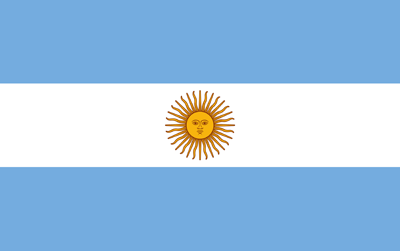Pakistan Local Cotton Market:
(For Local cotton, the textile sector is under significant pressure due to declining cotton prices, sluggish demand, and global economic instability, leading to financial crises and operational shutdowns. Buyers are cautious, delaying purchases as they anticipate further market drops. Without government intervention to reduce costs, the industry may continue to face severe challenges)
1- Business activity in the local cotton market was moderate, with buyers favoring cotton imports due to attractive price levels and holding off on local purchases in anticipation of further price drops, driven by global declines in cotton prices.
2- Stagnant demand for textile products is expected to keep cotton consumption below demand levels, leading to uncertainty among buyers who are waiting for the market to stabilize before making decisions.
3- Textile mills are urging the government to reduce energy costs, lower interest rates, and decrease taxes,
as sluggish demand and declining prices in cotton yarn and textile products are causing financial crises and partial or full shutdowns of operations.
4- Ongoing global economic crises and political instability, including tensions between Russia, Ukraine, Iran, Israel, and worsening conditions in Europe and the U.S., are further impacting the textile sector.
5- Cotton prices have dropped 14.43 USd/Lbs or 17.81% since early 2024, with U.S. futures hovering around
67 cents per pound due to falling oil prices, subdued demand, and a favorable supply outlook. Global cotton production is expected to rise 17% by 2033, driven by India, the U.S., and Brazil. Cotton is projected to trade at 64.75 USd/Lbs by the end of this quarter and 60.01 USd/Lbs in 12 months.
6- For the week ending August 8, 2024, U.S. export sales of Upland cotton for 2024/2025 totaled 110,900 RB, with primary buyers including Pakistan, India, and Vietnam, while exports reached 131,300 RB, mainly to Vietnam, China, and Pakistan. Net sales of Pima cotton were 22,400 RB, primarily to India, Vietnam, and China, with exports totaling 8,600 RB, led by India.
7- Last week, cotton prices in Punjab and Sindh showed firm trend from Rs 16,800 to Rs 18,600 per maund, (USC 0.75~0.82 lbs). In Sindh, cotton rate was Rs 17,000 to Rs 18,000 per maund, while in Punjab it ranged from Rs 17,800 to Rs 18,600 per maund. KCA was same at the level of Rs.17,500 Rs per maund, and
PSF remained firm at Rs. 365 PKR/kg.
Local Yarn Market:
(The local yarn market continues to exhibit sluggishness, with yarn prices holding steady under pressure. Suppliers navigate a challenging landscape marked by restrained inventory levels and escalating)
1- The local yarn market permeated a subdued atmosphere with slow activity, stable yarn, and cotton prices. The demand for fine-count yarns also softened amidst growing import competition.
2- Suppliers operated with minimal inventory to offset the impact of rising energy and production expenses.
3- PSF prices remained stable this week and are expected to decrease Rs 3-4/kg by next week.
4- Faisalabad’s market continued slow activity, especially in viscose and fine-count yarn sectors. Cash flow constraints persisted, hindering business operations.
| Count | Price in Pak Rupees / 10 LBS | Price US$/Bale |
| 16/1 Carded Weaving | 3250 – 3350 | 470 – 485 |
| 20/1 Carded Weaving | 3400 – 3500 | 490 – 505 |
| 30/1 Carded Weaving | 3800 – 3900 | 550 – 565 |
| 20/1 Combed Weaving | 3950 – 4100 | 570 – 595 |
| 30/1 PC Carded Weaving 52:48 | 3200 – 3550 | 465 – 515 |
| 40/1 Combed Compact Weaving | 4475 – 4600 | 650 – 665 |
| 60/1 Combed Compact Weaving | 6000 – 6250 | 870 – 905 |
| 80/1 Combed Compact Weaving | 8100 – 8300 | 1170 – 1200 |
| 40/1 CVC Carded Weaving 60:40 | 4000 – 4200 | 580 – 610 |
Export Yarn Market:
(Export yarn market showed betterment in terms of business activity as Chinese customers closed good orders. We might see another buying spree form customer in China in days to come as prices are matching with their psychological levels)
1- Export yarn market showed improved business activity during the week under review. Customers from China were actively checking prices but business confirmation was nomina.
2- Suppliers were firm in asking their prices but were interested to close business in presence of reasonable firm bids.
3- There has been a good business confirmation in domestic market which kept suppliers aside of panic selling in exports.
4- New cotton arrival is increasing and suppliers are buying cotton to cover their needs. However, cotton price is showing stability due to aggressive buying from spinners and expectation of short crop.
5- Chinese customers kept on checking prices and handsome numbers of deals were also closed with selected brands
6- European customers are closed for summer holidays and week was remained under minimal business activity.
| Export Yarn Prices | ||||||||||||||||
|
Local Fabric Market:
(Slow business was witnessed from the dyeing units however the local brands were active and booked decent quantities. Looking ahead, the market is expected to consolidate in the near term, with a potential for gradual improvement. However, the realization of this upward trend hinges on the revival of the finishing sector and a corresponding increase in export orders)
1- The local fabric market exhibited a subdued trajectory this week, with both narrow and wide-width fabric segments experiencing moderate trading activity. The finishing sector remained conspicuously absent, exerting downward pressure on market sentiment. Conversely, domestic apparel brands provided essential support, preventing a more pronounced slowdown.
2- Weaving operations for narrow-width looms are fully booked until 3rd week of September, indicating sustained demand. Wider-width looms also maintain a healthy order book extending to late September or early October. While these factors suggest underlying strength, the market’s overall tepid performance is a cause for concern.
Export Fabric Market:
(Limited business was seen in export fabric market from the Far Eastern sector. European and USA buyers are on summer holidays, so no considerable business was witnessed. The suppliers are expecting a good flow of business from early Sep to mid- September onward)
1- The export fabric market remained slow during the week under review due to slow demand in general.
2- Far Eastern customers have exchanged a limited number of inquiries, resulting in limited buying with selected suppliers.
3- Asking prices were stable due to stable yarn prices as well as a stable exchange rate for the last couple of weeks.
4- The suppliers are booked till end of Sep and offering Oct onward deliveries.
5- European and USA buyers are on summer holidays; thus, no considerable business was witnessed.
6- Prices for wider widths remained stable due to stable yarn prices in the domestic market as well as import-based yarn.
7- Wider-width suppliers are booked till the end of Oct and offer Nov onward deliveries.
| Local and Export Fabric Prices
| ||||||||||||
|
Bed Linen and Towel:
(Business activity is obvious and due to good demands from Europe and the West, there are order placements and bookings. However, the format of financial viability is temporary due to squeezed margins and break evens with very sharp target prices. Keeping in view these price points, this model is not long viable as its ultimate consequent will be losses of industry and Closure)
1- As it is being highlighted since last some weeks that HT industry is observing some critical challenges regarding higher costs of Energy and taxes. However, it is pertinent to mention that business activity is obvious in terms of demands / Order placements and volumes.
2- The supplier is following the ideology of retaining the customer at every cost to run the machines and covering the overheads. One can assume that for many production units, it is a matter of Do or Die situation. Either book the orders at Loss / Break Even / Lowest possible margins to meet the strict customer targets or to close the units.
3- The activity being shown in Home Textiles is due to order bookings at lower and shrink margins. If the situation remains so, it will be led to Industry losses and ultimate closure of further production houses
Garments:
(Overall, Pakistani garment manufacturers are running at good capacity and waiting for orders to fill the rest of the space also anticipating more orders; nevertheless, there is some hope that some of the country’s top retail brands have started placing orders with specific units)
1- The Pakistani apparel industry isn’t able to run at its maximum potential because they do not think that brands would have a significant demand.
2- Most of the export clients do not place substantial orders, such as those for the entire season.
3- The bulk of garment manufacturers are running at sixty to seventy percent of their capacity, and they are actively seeking further orders to refill the capacity that is not being utilized.
4- Orders are placed in segments, only considering urgent requests. A few European and American businesses are working on their FW25 offerings. By the end of October, factories may usually start taking orders, however, this will depend on the kinds of apparel and accessories required.
Crude Oil:
1- Crude Oil prices opened at USD 80.06 a higher level as compared to last week’s closing figures. in this week, crude oil prices showed a downward trend and closed on the higher side by the end of the week.
2- On the last day of the week, Crude Oil prices closed at USD 78.60 with a decrease of 1.46 USD cents as of the opening figure of the week.
| Opening of Week | Closing Of Week | Change | |
| Price | 80.06 | 78.60 | -1.46 |
Exchange Rate:
1- In the last week values of Pak rupee appreciated against US Dollar’s, other major currencies showed mix trend in both interbank and open markets.
2- At the end of the week, the Euro closed on a positive note with figure of 1.10 and British Pound also closed on positive note with figure 1.29 against USD.
| Selling | Buying | |
| LC Sight | 276.41 | 276.36 |
| LC 120 Days | 262.42 | 262.37 |
| Open Market | 281.08 | 275.81 |
New York Cotton Future:
The New York Cotton futures started the week higher than the previous week’s closing figures. However, NYCF showed a downward trend throughout the week and closed on lower side by the end of week.
1- October 2024 closed at 66.46, experiencing a decrease of 183 points from the previous week.
2- December 2024 closed at 67.24 showing a lower trend of 183 points from the previous week.
3- March 2025 closed at 68.74, decrease by 176 points from the previous week.
4- May 2025 closed at 69.99, drop of 173 points from the previous week.
Liver Pool Indices:
Index A opened at 78.70 lower levels than the previous week’s closing figure.
In this week Index “A” showed a mixed trend and closed on the slightly lower side by the end of the week.
At the last day of the week, LPI “A” closed at 76.65 with a decrease of 205 points.
| Opening of the Week | Closing of the Week | Change | |
| Index A | 78.70 | 76.65 | -2.05 |







